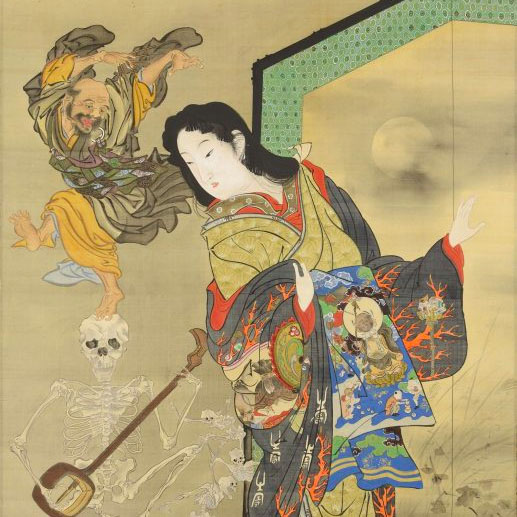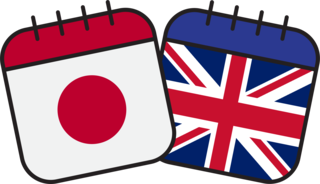
Kawanabe Kyōsai. Hell Courtesan (Jigoku–dayū), Dancing Ikkyū and Skeletons, 1871–89 (detail).
Modern traditions: A Japanese art history weekend
- 7 - 8 May 2022
- 10am — 5pm
- Wolfson British Academy Room, Burlington Gardens, Royal Academy of Arts
- https://www.sainsbury-institute.org/events/modern-traditions-a-japanese-art-history-weekend/
- Tweet
Royal Academy has organised a weekend course exploring the history of art and making in Japan, inspired by our exhibition ‘Kyōsai: The Israel Goldman Collection’.
The Japanese term ‘bijutsu’ – a translation of our Western term ‘art’ – did not appear until the late 19th century. At this point other terms were coined too; ‘kaiga’ (painting), ‘chōkoku’ (sculpture), ‘kōgei’ (craft) and ‘kenchiku’ (architecture) – as well as ‘sho’ (calligraphy), an artform typically neglected by the West.
This weekend-long art history and theory course will explore Japan’s aesthetic history, from the early influences of China and Korea, to the longstanding creative impact of Buddhism on the Japanese way of life. Expert tutors will guide participants through the complex histories of alternative art forms such as manga, ceramics, ink painting and Japanese gardens, as well as exploring the decorative arts and their journey into Western culture.
The weekend will include an exclusive visit to the exhibition Kyōsai: The Israel Goldman Collection as well as a talk by the President of the Royal Academy, Rebecca Salter, on Japanese printmaking methods.
